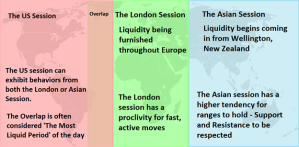11. The first loss is the best loss. Once you come to the realization that your trade is no good It’s best to exist immediately. “It’s never a loser until you get out” and “Not to worry, it’ll come back” are often said tongue in cheek, by traders in the pit. Once the frase is stated, it is an affirmation that the trader realizes that the trade is no good, it is not coming back and it is time to exit.
immediately. “It’s never a loser until you get out” and “Not to worry, it’ll come back” are often said tongue in cheek, by traders in the pit. Once the frase is stated, it is an affirmation that the trader realizes that the trade is no good, it is not coming back and it is time to exit.
12. Don’t hope and pray. If you do, you will lose. When i was a new and undisciplined trader, I can’t tell you how many times that I prayed to the “Bond god”. My prayers where a plea to help me out of a less than pleasant trade position. I would pray for some sort of divine intervention that, by the way, never materialized. I soon realized that praying to the “Bond god” or any other “futures god” was a wasted exercise. Just get out!
13. Don’t worry about news. It’s history. I have never understood why so many electronic traders listen to or watch CNBC, MSNBC, Bloomberg News or FNN all day long. The “talking heads” on these programms know very little about market dynamics and market price action. Very few, if any, have ever even traded one lot in any pit on any exchange. Yet they claim to be experts on everything. Before becoming a “trading and markets expert,” the guy on CNBC reporting hourly the Bond Pit, was a phone clerk on the trading floor. Obviously this qualifies him to be an expert! He, and others can provide no utility to you. Treat it for what it really is… entertainment. The fact is: The reporting that you hear on the business programs is “old news.” The story has already been dissected and consumed by the professional market participants long before the “news” has benn diseminated. Do not trade off of the reporting. It’s too late.
14. Don’t speculate. If you do, you will lose. In all of the years that I have been a trader and associated with traders, I have never met a successful speculator. It is impossible to speculate and consistently print large winners. Dont’t be a speculator. Be a trader. Short-term scalping of the markets is the answer. The probability of a winning day or week is greatly increased iy you trade short term: small winners and even smaller losses. (I like this one)
15. Love to lose money. This rule is the one that i get the most questions and feed -back on by traders from all over the world. Traders ask, “What do you mean, love to lose money. Are you crazy?” No, I’m not crazy. What I mean is to accept the fact that you are going to have losing trades throughout the trading session. Get out of your losers quickly. Love to get out of your losers quickly. It will save you a lot of trading capital and will make you a much better trader.
Tags: discipline, scalping, strategy, trading




